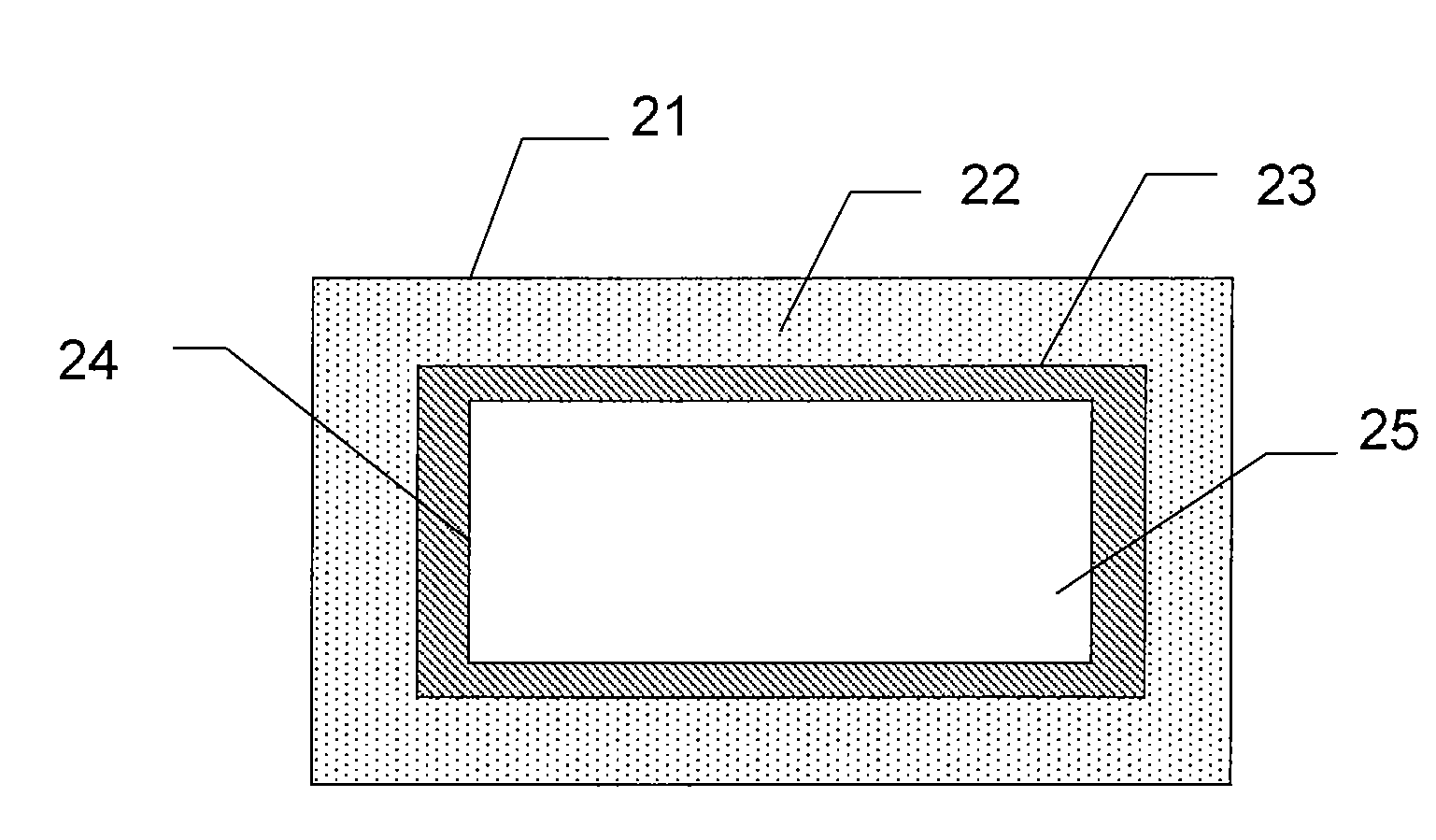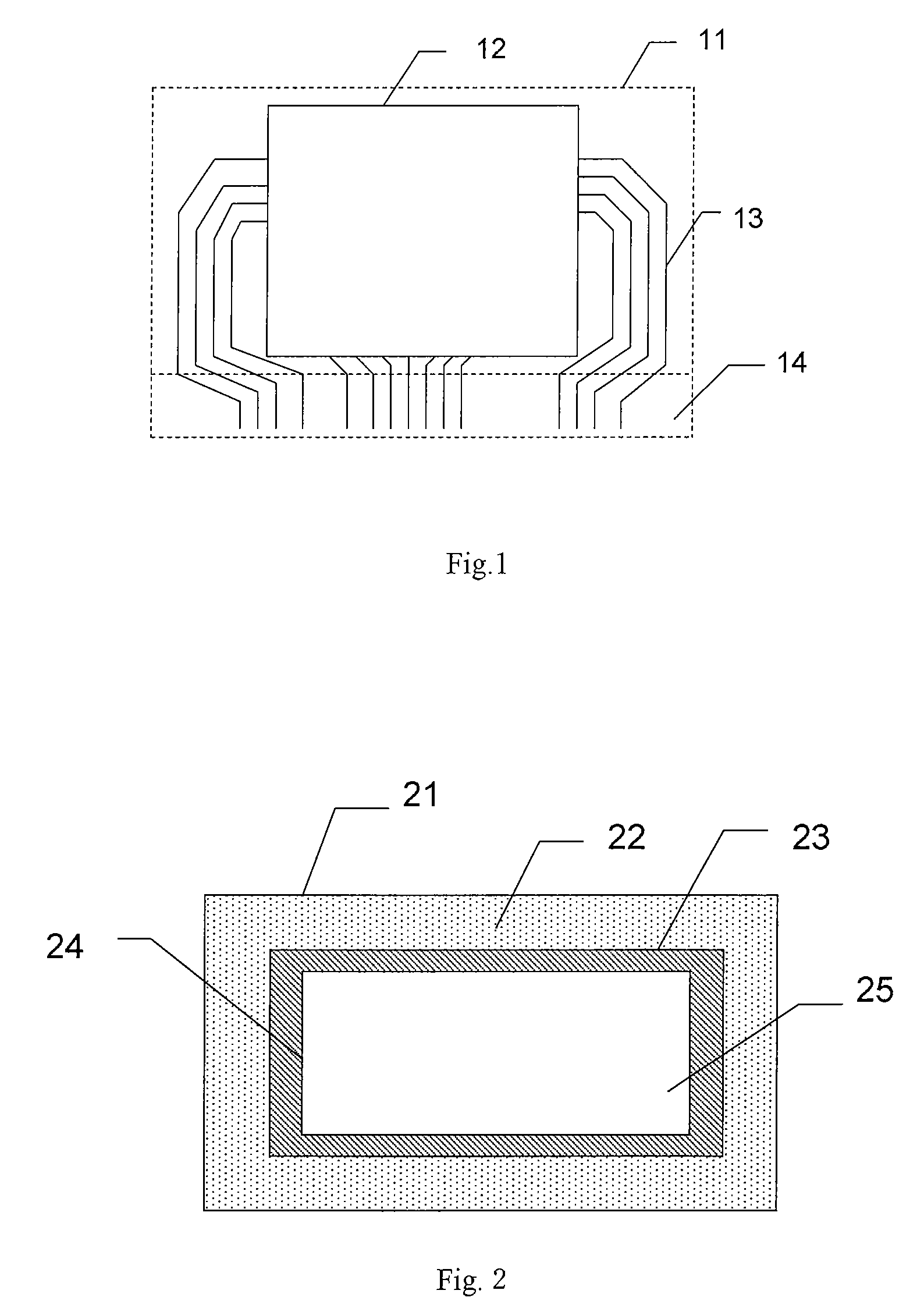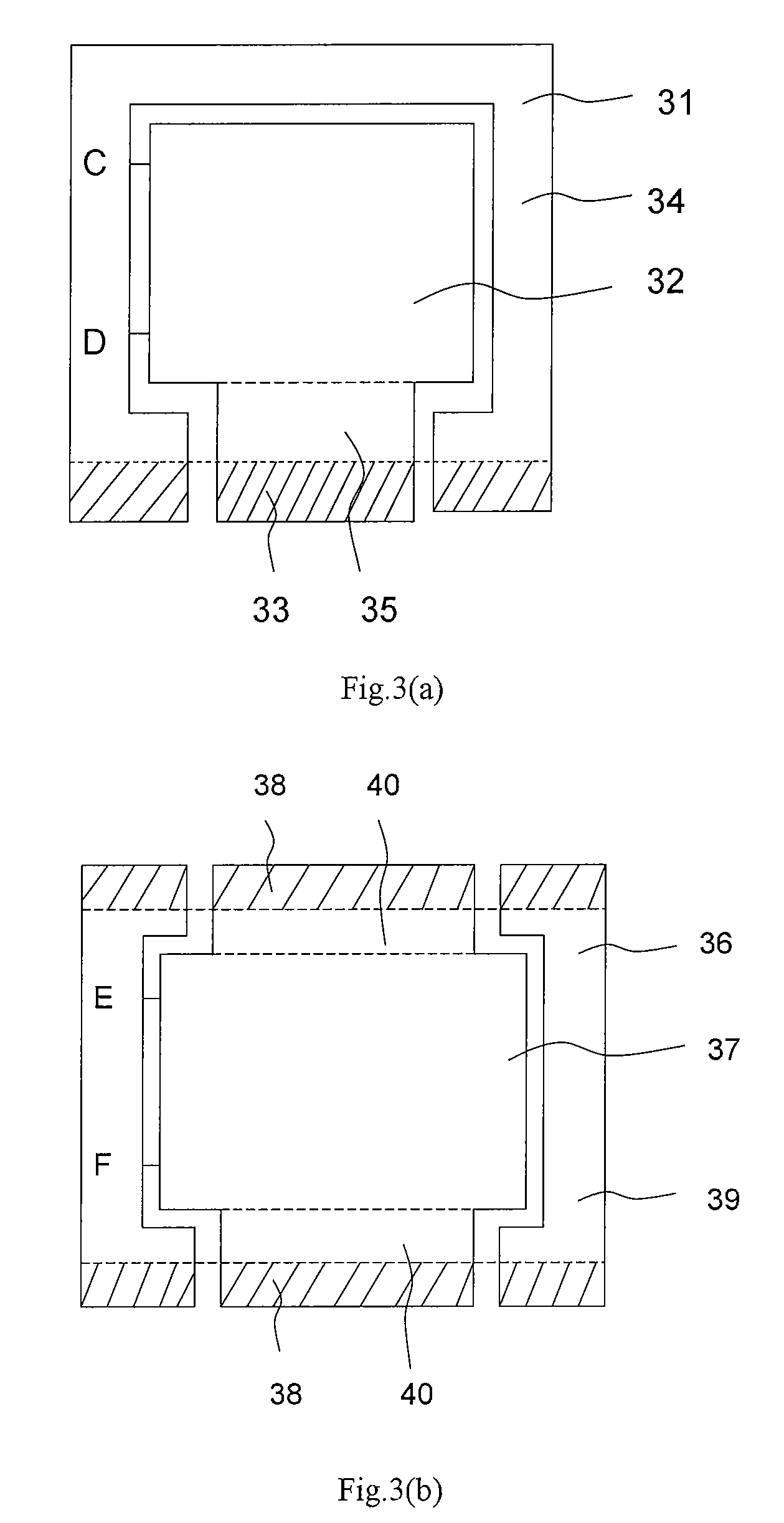Organic electroluminescent devices
- Summary
- Abstract
- Description
- Claims
- Application Information
AI Technical Summary
Benefits of technology
Problems solved by technology
Method used
Image
Examples
example 1
[0043]Turning to FIG. 4(b), it is a structural section diagram of the organic electroluminescent display of Display Example 1, in which the display comprises a substrate 41, an organic electroluminescent device 48, a packaging sheet 44, a packaging region 49, a packaging region and electrode transferring region 42, a bonding region 45, a drying region 47, and in which the organic electroluminescent device 48 is disposed on the substrate 41, the packaging sheet 44 is disposed on the organic electroluminescent device 48, the packaging sheet 44 is connected with the substrate 41 through a packaging adhesive in order to package the device, and a recess is provided in the middle part of the packaging sheet 44 for placing a drying agent. In addition, from the section diagram of the organic electroluminescent device as shown in FIG. 4(b), it can be seen that the packaging region 49, the packaging region and electrode transferring region 42 and bonding region 45 are disposed on the surface ...
example 2
[0046]Turning to FIG. 5, it is a structural section diagram of two surfaces of the organic electroluminescent display of Display Example 2 of the present invention, in which the display comprises a first display device, a second device and a packaging sheet sandwiched between the first display device and the second display device, in which the first display device comprises a first substrate 50 and a first component 51, and correspondingly the second display also comprises a substrate and a second component, and the packaging sheet 52 is sandwiched between the two display devices and has two surfaces which separately are adjacent to the two display devices. The packaging sheet 52 is joined to the first substrate and the second substrate through a packaging adhesive, a recess is disposed at each of the two surfaces of the packaging sheet 52 for placing a drying agent. In addition, a packaging region 55, a packaging region and electrode leads transferring region 53 and bonding region ...
example 3
[0050]The present example relates to an organic electroluminescent while light source, preferably having a device structure as follows:
[0051]substrate / ITO / NPB / NPB:Rubrene / BAlq:TBPe / Alq3 / LiF / Al.
[0052]FIG. 6 shows the schematic diagrams of a procedure for making the light source of the present example, in which the procedure comprises the following steps:
[0053]1) Cleaning and drying a transparent glass substrate, and sputtering a transparent conductive film ITO thereon as anodes of the device, in which the ITO has a square resistance of 5Ω and a film thickness of 100.00 nm;
[0054]2) Placing the above cleaned and dried ITO glass into a vacuum chamber having a pressure of 1×10−5Pa, vapor depositing on the ITO film a layer of N,N′-bis-(1-naphthyl)-N,N′-biphenyl-(1,1′-diphenyl)-4,4′-diamine (NPB), having a thickness of 100 nm, as the hole transport layer of the device;
[0055]3) Keeping the above vacuum pressure, vapor depositing on the hole transport layer a electroluminescent layer, in whi...
PUM
 Login to View More
Login to View More Abstract
Description
Claims
Application Information
 Login to View More
Login to View More - R&D
- Intellectual Property
- Life Sciences
- Materials
- Tech Scout
- Unparalleled Data Quality
- Higher Quality Content
- 60% Fewer Hallucinations
Browse by: Latest US Patents, China's latest patents, Technical Efficacy Thesaurus, Application Domain, Technology Topic, Popular Technical Reports.
© 2025 PatSnap. All rights reserved.Legal|Privacy policy|Modern Slavery Act Transparency Statement|Sitemap|About US| Contact US: help@patsnap.com



